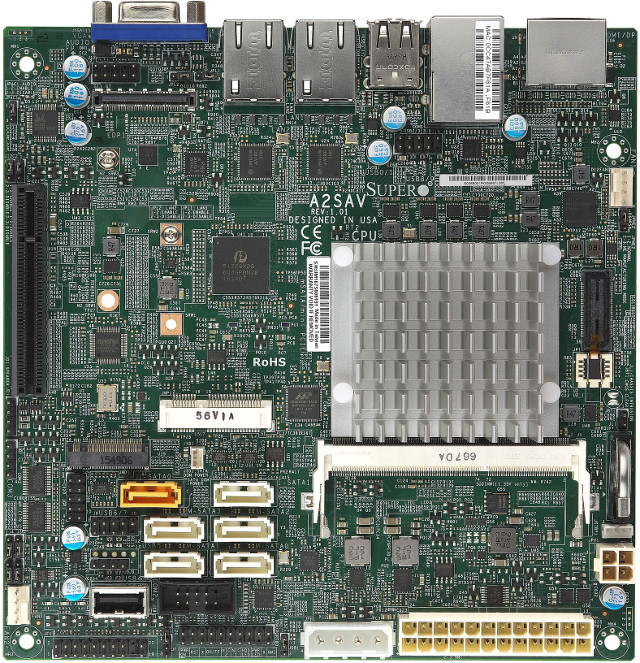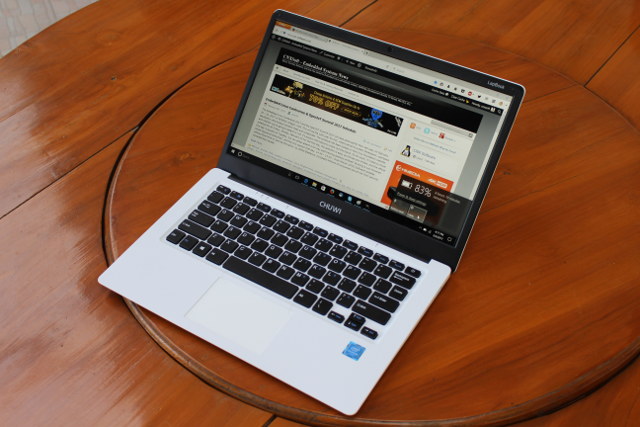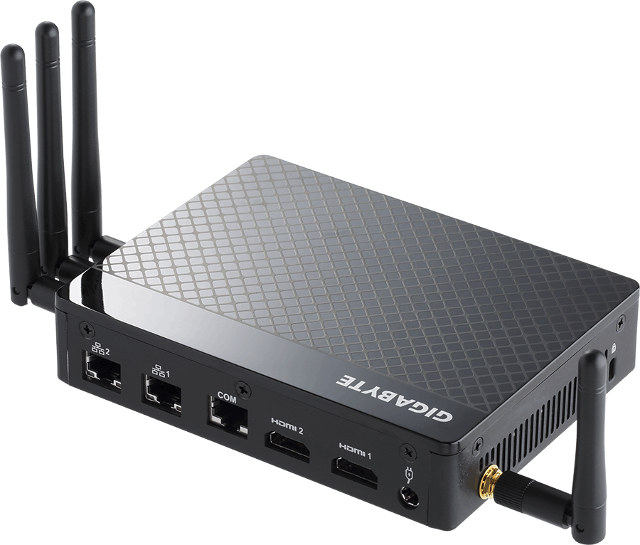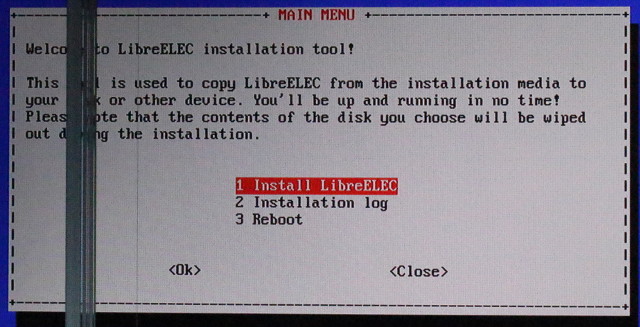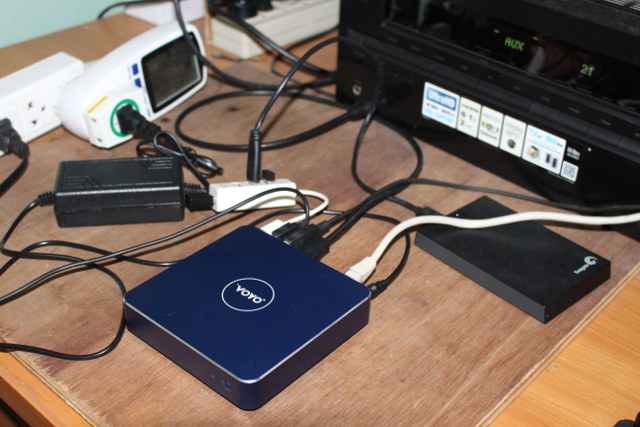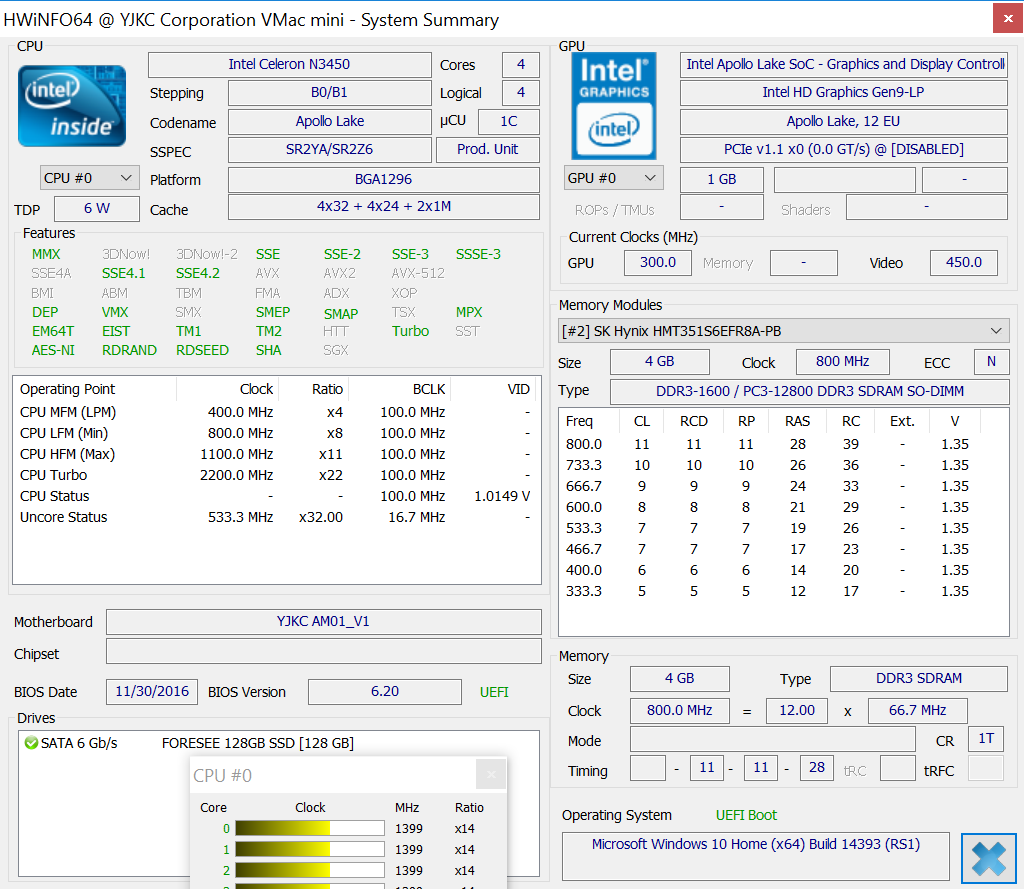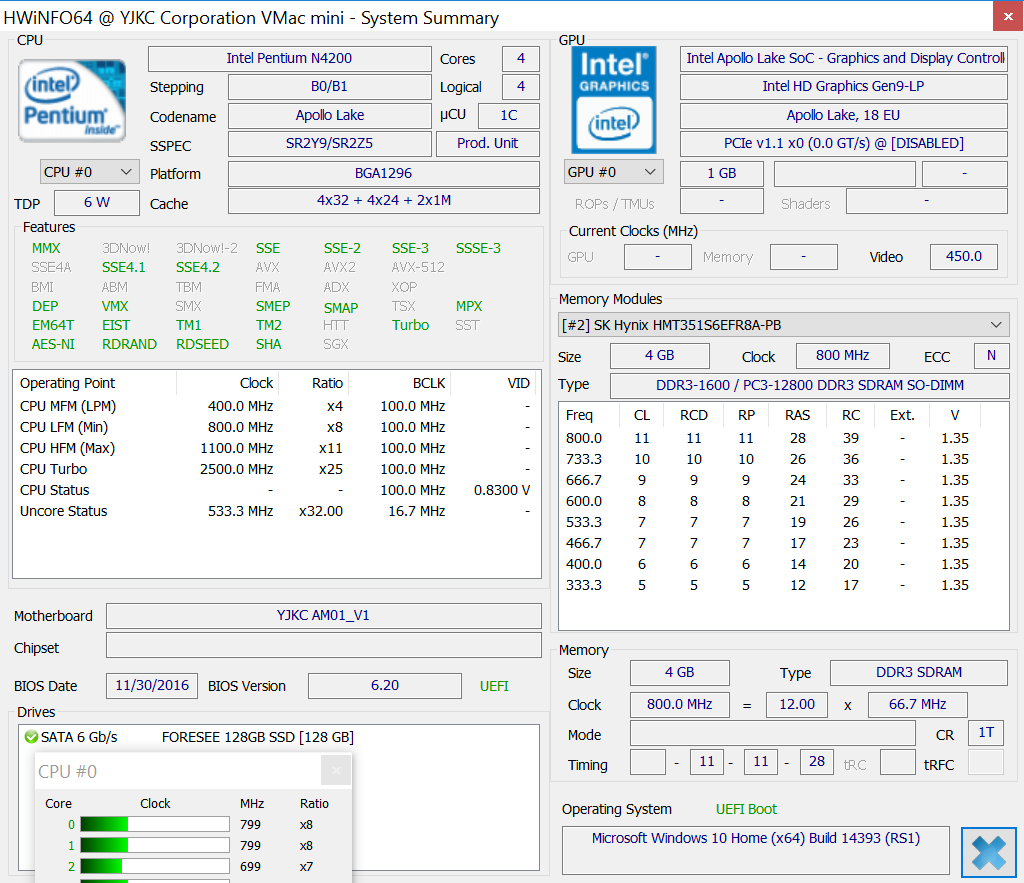Intel introduced three Atom E3900 series Apollo Lake processors last fall that target IoT, industrial and automotive applications, and Supermicro has designed A2SAV mini-ITX board powered by Atom x5-E3940 SoC that comes with lots of interfaces include 6 SATA ports, two Gigabit Ethernet RJ45 ports, and up to 9 USB interfaces accessible from connectors or headers. Supermicro A2SAV motherboard specifications: SoC – Intel Atom x5-E3940 quad core “Apollo Lake” processor @ 1.6 / 1.8 GHz with 2MB L2 cache, 12 EU Intel HD graphics (6.5W TDP) System Memory – 1x 204-pin DDR3 SO-DIMM socket for 2, 4, or 8GB 1866/1600/1333MHz Unbuffered non-ECC 204-pin SO-DIMM DDR3 Storage 6x SATA3 ports include 2x from SoC, and 4x via Marvel 88SE9230 controller 1x SATA DOM (Disk on Module) power connector 64Mb SPI Flash EEPROM with AMI UEFI BIOS supporting Plug and Play (PnP), DMI 2.3, ACPI 5.0, USB Keyboard, SMBIOS 2.7.1, and UEFI mSATA […]
CHUWI LapBook 14.1 Apollo Lake Laptop Review – Part 2: Windows 10 Benchmarks, User Experience, and Battery Life
CHUWI LapBook 14.1 is the one of the first Apollo Lake laptop on the market. It features a 14.1″ IPS display, a Celeron N3450 quad core processor, 4GB RAM and 64 GB storage. The company has sent me a sample for review, and I had already check out the hardware in “CHUWI LapBook 14.1 Apollo Lake Laptop Review – Part 1: Unboxing & (Partial) Teardown“, so since then I’ve played with it including checking emails & news, writing a blog post on CNX Software, and watching some YouTube videos, as well as running benchmarks and estimating battery life, so I’ll report about my experience with the laptop in the second part of the review. CHUWI LapBook 14.1 System Information LapBook 14.1 runs an activated version of Windows 10 Home 64-bit on an Intel Celeron 3450 “Apollo Lake” quad core processor @ 1.1 GHz / 2.2 GHz with 4 GB RAM […]
GIGABYTE EL-30 Apollo Lake Fanless IoT Gateway Powered by Intel Pentium N4200 to Launch in Q2 2017
GIGABYTE will soon introduce their EL-30 “Intel Apollo Lake IoT Gateway Solution” powered by a quad core Intel Pentium N4200 with 32GB storage, dual Gigabit Ethernet ports, dual HDMI ports, WiFi and Bluetooth connectivity, as well as a mini PCIe slot for 3G module or mSATA storage, and an optional Zigbee module. GIGABYTE EL-30 specifications: SoC – Intel Pentium processor N4200 with 4 cores, 4 threads @ 1.10 – 2.50 GHz with 2MB L2 cache, 18EU Intel HD Graphics 505 (6W TDP) System Memory – 2x SO-DIMM slots for DDR3L 1600/1866MHz memory up to 8GB Storage -32GB eMMC flash + 1x SD card slot + optional mSATA module Video Output – 2x HDMI 1.4b ports up to 3840×2160@30 Hz Audio – Via HDMI ports, 3.5mm audio jack (headphone + mic), Realtek ALC255 audio codec Connectivity 2x GbE LAN ports (Realtek RTL8111HS) Pre-installed WiFi + Bluetooth module in half-size mini PCIe […]
LibreELEC (Kodi Linux) on Voyo V1 VMac Mini Apollo Lake Mini PC
I’ve just posted Voyo V1 VMac Mini review with Windows 10 this morning, and at the end I mentioned I quickly tried to run Ubuntu 16.04 without success. Reader Piotr who also happens to be a LibreELEC together with about 65 other team members, noticed it, provided me a link to a development version of LibreELEC 8.0 (mirror link) working with Apollo Lake processors, and explained Ubuntu was not working because Linux needs updated Mesa and Intel drivers. The image is based on Linux 4.10-rc5 with the necessary drivers and Kodi 17. The changes were mostly made by FernetMenta (Rainer Hochecker), and will be merged in Linux 4.10 and Mesa 17.0. He also implemented 10-bit HEVC support that will officially be available in Kodi 18 only and found in daily builds. So let’s try this out. After downloading LibreELEC-Intel.x86_64-8.0-devel-20170130110609-r25167-gd210441.img.gz, I tried to flash it (N.B.: no need to extract it) […]
Voyo (V1) VMac Mini Apollo Lake Mini PC Review – Part 2: Windows 10
Voyo VMac Mini, also sometimes referred to just Voyo V1, is an actively cooled mini PC powered by Intel Celeron N3450 or Pentium N4200 Apollo Lake processor. I’ve received samples for both, and already taken pictures of the device and motherboard. So in the second part I’ll review the mini PC checking out system info, running some benchmarks on both, and see how it performs as an entry-level desktop PC. Voyo VMac Mini Setup and System Information Setup is pretty straightforward, as you just need to connect mouse and keyboard, Ethernet, the mini HDMI to HDMI cable, optionally the included USB WiFi dongle, the power supply, and finally press the power button to get to Windows 10 desktop logged in as “admin” user in about 30 seconds. Some Apollo Lake mini PCs support HDMI 2.0 video output, but this requires a DisplayPort to HDMI 2.0 bridge chip, which not included […]
Add a 2.5″ Hard Drive to Voyo VMac Mini mini PC with a $20 Custom SATA Cable
When I tore down Voyo VMac Mini mini PC, I noticed a 2.5″ mounting mechanism, and some weird 9-pin SATA connector, but since the hard drive would be so close to the components I assumed this specific case was not designed for a drive, but the board would be compatible. However, it’s now possible to purchase a $20 custom SATA cable from “Voyo Official Store” on Aliexpress to do just that.All you have to do is to open the case, connect the cable to the motherboard, and the hard drive, and mounting the hard drive to the mechanism with four screws. I’m not sure whether you should also use some kind of insulation between the drive and motherboard, as it will be really close, but the company does not mention anything about that. Cooling might also be an issue even though there’s a fan in the mini PC. It’s not […]
Voyo VMac Mini mini PC Benchmarks with Intel Celeron N3450 Apollo Lake Processor
Following up yesterday’s post about Voyo VMac Mini mini PC benchmarks with Intel Pentium N4200 processor, I’ve switched to its cheaper little brother powered by Intel Celeron N3450 processor and performed the same benchmarks to compare the performance difference with the Pentium version, as well as older Braswell and Cherry Trail systems. I’ve run HWiNFO64 before running the benchmarks to get more details about computer, and especially the processor. Celeron N3450 is a quad core processor clocked at 400, 800, and 1,100 MHz, and up to 2.2 GHz in burst mode. It’s quite similar to Pentium N4200, except the later has a higher burst frequency (2.5 GHz), and a better GPU with 18 EU, instead of just 12 EU on the Celeron. My exact version of the processor is stepping B0/B1 with sSPEC SR2YA/SR2Z6. I forgot to comment about supported features compared to Cherry Trail and Braswell processors yesterday, and […]
Voyo VMac Mini mini PC (Intel Pentium N4200) Benchmarks
Since I’ve now received Intel Apollo Lake hardware with Voyo VMac Mini mini PCs, I’ve going to run some benchmarks with Pentium N4200 and Celeron N3450 processor to compare the performance against older generation low power mini PC based on Braswell and Cherry Trail processors. I’ll get started with the Pentium N4200 version that’s both more expensive and powerful. But before starting with the benchmarks, I’ve run HWiNFO64 to get a bit more info about the system, and the processor in particular. The processor is the quad core Pentium N4200 stepping B0/B1 with sSPEC SR2Y9/SR2Z5 clocked between 400 and 1,100 MHz, and up to 2,5 GHz in burst mode. It also comes with a 18 EU HD graphics Gen9-LP. IMHO, PCMark 8 Home Accelerated 3.0 is one of the best benchmark as it replicates typical use cases such as web browsing, video conference, light gaming, photo editing, and so on. […]


